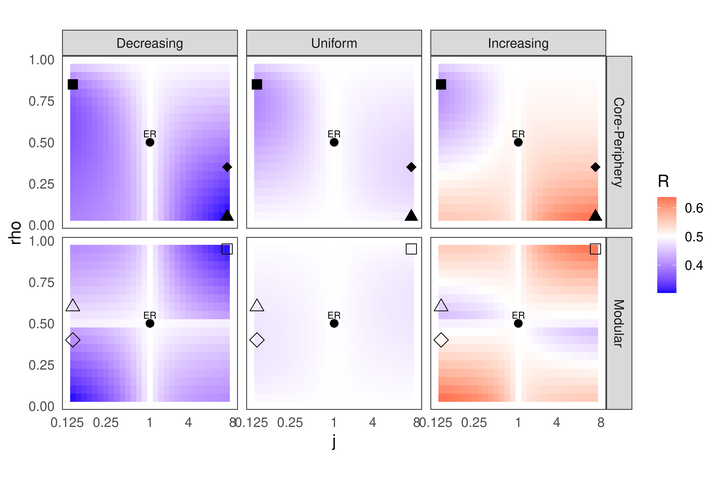Impact of the mesoscale structure of a bipartite ecological interaction network on its robustness through a probabilistic modeling

Abstract
The robustness of an ecological network quantifies the resilience of the ecosystem it represents to species loss. It corresponds to the proportion of species that are disconnected from the rest of the network when extinctions occur sequentially. Classically, the robustness is calculated for a given network, from the simulation of a large number of extinction sequences. The link between network structure and robustness remains an open question. Setting a joint probabilistic model on the network and the extinction sequences allows analysis of this relation. Bipartite stochastic block models have proven their ability to model bipartite networks for example, plant-pollinator networks: species are divided into blocks and interaction probabilities are determined by the blocks of membership. Analytical expressions of the expectation and variance of robustness are obtained under this model, for different distributions of primary extinction sequences. The impact of the network structure on the robustness is analyzed through a set of properties and numerical illustrations. The analysis of a collection of bipartite ecological networks allows us to compare the empirical approach to our probabilistic approach, and illustrates the relevance of the latter when it comes to computing the robustness of a partially observed or incompletely sampled network.